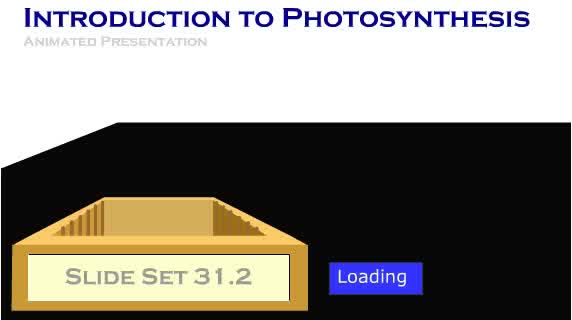
California Regents
Introduction to Photosynthesis
Slide Duration:Table of Contents
Section 1: Welcome to Biology
Biology and Biologists
18m 11s
The Chemical Basis of Life
12m 17s
Water and Life
17m 48s
Organic Molecules
16m 32s
Macromolecules
16m 7s
Cells: The Basics
16m 3s
More about Cells
23m 19s
Cell Membranes
24m 14s
Section 2: The Gene
DNA Discovery & Structure
13m 1s
DNA Replication
21m 3s
The Transcription of DNA to RNA
17m 5s
Translation: Protein Synthesis
18m 30s
Eukaryotic Genomes
18m 37s
Viral & Bacterial Genomes
12m 50s
Applications of Biotechnology
13m 29s
Section 3: Principles of Heredity
The Cell Cycle & Mitosis
15m 41s
Sexual Life Cycle & Meiosis
26m 5s
The Mendelian Model of Inheritance
16m 33s
Genes & Chromosomes
16m 57s
Section 4: Evolutionary Biology
Darwin in Historical Context
13m 24s
Mechanisms of Evolution
19m 21s
Speciation
12m 15s
Section 5: Biological Diversity
Systematics: Classifying Organisms
20m 38s
The History of Life on Earth
1m 41s
Prokaryotes
20m 52s
Unicellular Eukaryotes
23m 9s
Plants and Their Relatives
12m 46s
The Fungi
17m 8s
An Introduction to the Animals
16m 11s
From Invertebrates to Vertebrates
20m 45s
Section 6: The Energetics of Life
Enzymes and Metabolism
17m 52s
An Overview of Metabolism
10m 54s
Glycolysis
29m 51s
The TCA Cycle
21m 4s
Electron Transport, ATP Synthesis, and Chemiosmosis
21m 5s
Section 7: Animal Structure, Reproduction and Development
Animal Form and Function
15m
Animal Reproduction
16m 17s
Animal Development
20m 38s
Section 8: Circulation, Body's Defenses, Nutrition
The Circulatory System
20m 19s
The Respiratory System
25m 41s
The Lymphatic System and the Blood
12m 23s
Nonspecific Immune Defenses
11m 28s
Specific Immune Defenses
24m 9s
Diet and Feeding Mechanisms
17m 12s
The Digestive System
21m 5s
Osmoregulation and Excretion
21m
Section 9: Nervous System and Internal Controls
Nervous Systems and Sensation
25m 8s
How Nerves Work
22m 50s
Hormones
30m 22s
The Endocrine System
19m 24s
Skeletons
13m 58s
Muscle Structure and Contraction
17m 26s
Section 10: Plants: Form and Function
Plant Nutrition
21m 4s
Introduction to Photosynthesis
20m 51s
The Light Reactions
18m 24s
The Calvin-Benson Cycle
14m 32s
Plant Reproduction and Development
21m 35s
Control Systems in Plants
16m 52s
Section 11: Ecology
The Natural Setting
21m 18s
Population Ecology
21m 2s
CommModuley Ecology
22m 29s
Energy Flow and the Water Cycle
21m 56s
Chemical Element Cycles
20m 47s
Section 12: Conservation Biology
Generation Advancement
21m 49s
Basics of Behavior
23m
Social Behavior
24m 3s
Loading...
This is a quick preview of the lesson. For full access, please Log In or Sign up.
For more information, please see full course syllabus of Biology
For more information, please see full course syllabus of Biology
Biology Introduction to Photosynthesis
Bookmark & Share
Embed
Share this knowledge with your friends!
Copy & Paste this embed code into your website’s HTML
Please ensure that your website editor is in text mode when you paste the code.(In Wordpress, the mode button is on the top right corner.)
×
Since this lesson is not free, only the preview will appear on your website.
- - Allow users to view the embedded video in full-size.
Next Lecture
Previous Lecture












































 Answer Engine
Answer Engine